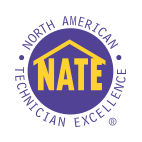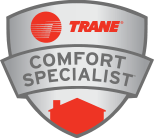If you’ve been looking into purchasing a home or having any type of major construction done, you may have run across the term LEED Certified. Of course, contractors boast of so many certifications these days that it can be tough to tell which you should pay attention to and which you shouldn’t. But the LEED certification is definitely one that’s worth taking into account when you’re choosing a contractor and planning out your project.
The Benefits of LEED Certification
LEED stands for Leadership in Energy and Environmental Design. The standards and guidelines for obtaining LEED certification were put together by the U.S. Green Building Counsel in order to improve construction practices and help buyers find property that meets higher standards in a variety of environmentally significant categories.
For instance, a LEED certified home boasts better water and energy efficiency than the average home that is not LEED certified. It also was put together using techniques designed to reduce carbon dioxide emissions and improve indoor air quality, making it both the healthy choice for you as the consumer and the environmentally responsible one.
When you purchase a LEED certified home, you’re not just helping the environment either. You’re also helping yourself in a variety of ways. That’s because a home that meets LEED certification standards for energy and water efficiency will help you generate smaller energy and water bills each month. That translates to huge saving over time, so even if you pay a bit more initially for your home, you’ll get that money back many times over as time passes.
LEED certification isn’t just something you should pay attention to when you’re buying a new home. Any construction project you undertake for your existing home can also benefit from these guidelines and standards. For that reason, it’s worth seeking out a contractor who can provide services in line with LEED standards. These types of improvements and techniques need to be incorporated in your home improvement project from the initial planning stage, and a contractor familiar with LEED standards will have no trouble doing just that.
You can also have confidence in the contractor you pick if they carry LEED credentials because they’re not easy to get. Anyone who is LEED certified has put a lot of time and energy into obtaining those credentials and is likely just the type of contractor you’d like taking care of your next home improvement project.


